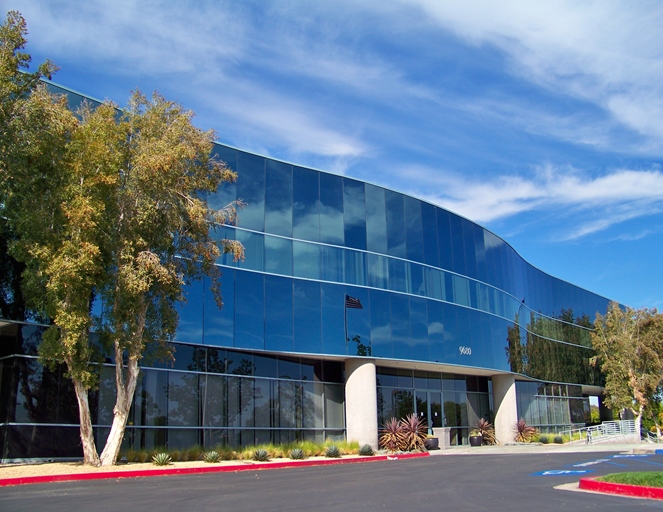Daily Business Report — June 24, 2014
NBC 7 San Diego will move into this building at 9680 Granite Ridge Drive in Kearny Mesa in 2016.
NBC Moving Out of Downtown San Diego
Kearny Mesa Will be New Headquarters
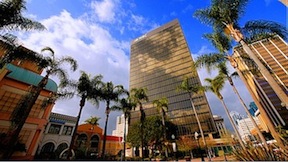
NBC 7 San Diego will be moving out of the Downtown high-rise that bears its name next year and moving into a 52,347-square-foot office building in Kearny Mesa that it purchased for $9.6 million. The two story, Class A building is located at 9680 Granite Ridge Drive in the StoneCrest office complex .
“Evolving media technologies, a need for a larger studio, and today’s favorable cost of funds made it advantageous for NBC 7 San Diego to purchase their own building,” said Tim Cowden, senior vice president at Colliers International, which represented the television station. The station is currently housed at 225 Broadway. It expects to be in the new building in the third quarter 2016 after major improvements are done next year.
The seller of the Kearny Mesa building is T-C Stonecrest LLC, which was represented by CBRE in the sales transaction.
County Supervisors to Consider Doubling
Size of Special Fund for District Projects
The San Diego County Board of Supervisors today is expected to approve doubling the size of a special fund that all five members can use for projects without going through the traditional budget process.
The fund is called the Neighborhood Reinvestment Program, and the supervisors all favor bumping it up from $5 million to $10 million, according to an inewsource tally of the board this month. If the increase is approved, each supervisor will have $2 million in what essentially are discretionary funds to distribute to nonprofits, cities and even county departments. Final grants must be approved by the full board.
Critics have charged in the past that the program is a publicly funded “slush fund” for supervisors’ pet projects that can be used to help win them favor with constituents and get them re-elected. When the program was created in 1998, the supervisors had $1 million apiece to spend. They doubled the money the following year to $2 million each. It was squeezed in half by a tight budget in 2010.
The supervisors say the fund allows them — the ones who know their districts best — to finance projects without having to go through the complex and potentially contentious budget process.
During the past 16 years, the supervisors have funded hundreds of organizations and projects with this special money. inewsource examined that spending — thousands of records — to find trends and identify grant recipients. The records show that 12 recipients got $1 million or more in grants from supervisors since the program began. Among those are three county departments, two capital investments within the county and one county library.
That means half of the top 12 recipients of grants bestowed by the supervisors are the county itself.
— inewsource
Search through the inewsource database of grants since 1998…
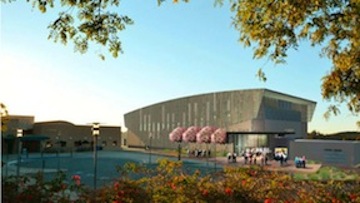
Cal State San Marcos Seeks NCAA Division II Status
California State University San Marcos announced Monday that it has applied for NCAA Division II status and plans to build a 1,400-seat multipurpose arena. Cougars athletic teams have competed in the National Association of Intercollegiate Athletics — a separate organization outside of the NCAA — for 15 years.
If the application is accepted next month, the transition would take place over a three-year period beginning in fall 2015, according to the school, which made the announcements in its semiannual Steps magazine. CSUSM would become eligible for NCAA post-season events in the 2017-18 academic year.
The attraction for CSUSM is in joining the California Collegiate Athletic Association, which encompasses a dozen public universities in California, including UC San Diego.
“CSUSM Athletics is ready to take that next step in the department’s competitive growth,” said CSUSM Director of Athletics Jennifer Milo. “That next step for us is becoming a part of the NCAA Division II as a member. Our coaches, staff and student-athletes have worked extremely hard to build a strong foundation that will give us the opportunity to have an immediate impact in the NCAA and the CCAA.”
The planned arena would host men’s and women’s basketball games, volleyball contests, campus recreation and community events. The school said construction was set to begin this fall, with opening scheduled in two years.
San Diego City Council Approves Tax
Incentives to Help Breweries Expand

The City Council Monday unanimously approved a package of incentives that will help San Diego craft brewers Ballast Point and AleSmith move into larger manufacturing plants. Under terms of the deal, increased tax revenues created by the larger facilities will offset various municipal fees the brewers paid to renovate and move into the new locations in the Miramar area.
Both plan on opening full-service restaurants, tasting rooms and gift shops — along with being able to produce a lot more beer than they can now. The new facilities will be between 105,000 and 125,000 square feet — among the largest in California.
While San Diego has become nationally known for its craft brewing industry, none of the individual companies rank among the biggest producers. In a ranking of craft brewers by the amount of sales in 2013, Ballast Point ranked 29th while AleSmith was not in the top 50.

However, the city’s Russ Gibbon said tax revenues from all of the craft brewing businesses in town increased by 300 percent from 2011 to 2012, and another 50 percent from last year to this year.
“This is a thriving industry for San Diego — it’s part of the innovation economy,” said Councilman Mark Kersey, who represents the district. “This is a key export for our region.”
About three years from now, the companies should each generate about $50,000 in annual sales tax revenue, far in excess of what was paid by the previous occupants of the properties, according to city staff. Before then, around $160,000 in fees paid by Ballast Point and $175,000 by AleSmith will be reimbursed.
City officials said Ballast Point plans to add 100 jobs, while AleSmith will add around 25 positions to start with. On top of that, each project to prepare the new facilities will employ 25 construction workers for one year.
Ballast Point has been making beer in a 23,000-square-foot plant in Scripps Ranch and, according to founder Jack White, brewed its first beer in the new building last week. City officials said its only alternatives to expand were the Miramar location or a spot in neighboring Poway.
Public facilities like the restaurant should open in August, White said.
AleSmith is creating similar facilities, and will continue to make specialty cheeses for retail sale.
Twenty-two breweries and 19 brew pubs now operate in San Diego, and three other breweries are under construction, according to the city.
— City News Service
Law Firm Helps Developers Subdivide
Air Space in Housing Developments
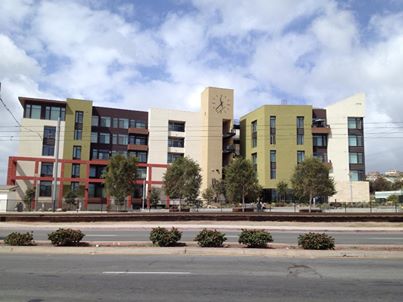
Two new housing developments utilizing subdivided airspace were recently honored as Projects of the Year by the San Diego Housing Federation during the presentation of the 2014 Ruby Awards for the best affordable housing projects in the county.
For both The Post Housing in Imperial Beach and Citronica One Lemon Grove, the winning formula involved taking one building and creating two parcels within each project, said Dennis Stryker of San Diego-based Stryker Slev Law Group. The four-story Post Housing was honored in the category of Housing Project of the Year with 50 units or fewer. Citronica One was recognized as Housing Project of the Year with more than 50 units.
“The concept of subdivided airspace is not uncommon in a lot of places, but it is not used a lot on the West Coast,” said Stryker.. “It’s essentially a building on the ground with another ‘building’ sitting on top of it.”
In Imperial Beach, Stryker Slev represented the property owner, American Legion Post 820, which was looking to build a new facility and retain ownership of the land while also providing affordable housing for veterans, seniors and others in Imperial Beach.
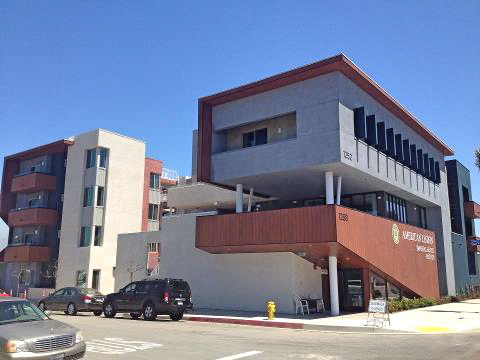
The plan was to turn the space above the new Post hall into 29 apartments and a manager’s unit owned by a limited partnership comprised of Hitzke Development and others, with Hitzke acting as the developer. Design duties were handled by Foundation for Form.
The need to split project uses at Citronica One called for a similar solution. One parcel is 3,700 square feet of street level commercial space at the site at 7751 North Ave. The other is 56 apartments — 15 of which are designated for underserved transition-aged youth with mental illness eligible for supportive services.
The $15.8 million project opened in 2013. Commercial tenants will include a restaurant, which is still in the design phase. Located near the Lemon Grove Avenue Trolley station, it was designed by Foundation for Form Architecture.
Report Says Algae Biotechnology
Jobs Doubled Over Past 2 Years

A study conducted by the San Diego Association of Governments found that the direct, indirect, and induced economic impact of the algae biotechnology research and manufacturing industry generates a total of about 1,020 total jobs, $80 million in wages, and over $175 million of economic output to the San Diego region.
According to SANDAG, algae biotechnology continues to have a strong economic presence in the San Diego region and employment continues to show consistent growth. The study found that 395 employees are directly engaged in private sector algae biotechnology research and manufacturing and 110 are engaged as academic faculty and research assistants for a total of 505 workers. Direct employment in algae biotechnology-related manufacturing and research has nearly doubled since 2009.
“When it comes to clean technology innovation, the world looks to San Diego, and our thriving algae technology industry is no exception,” said Jason Anderson, president of CleanTECH San Diego. “With top scientists conducting cutting-edge research at UC San Diego and business leaders like Sapphire Energy, Cellana, and Synthetic Genomics continuing to innovate, San Diego’s algae market will only continue to flourish.”
Dallas Developer Expands to San Diego

Dallas-based StreetLights Residential, a developer of apartments, has opened an office in San Diego and hired San Diego resident Michael Yanicelli to head it as vice president of development. He will be responsible for multifamily developments and acquisitions in California and the Southwest. The company identified Southern California as a desirable market for expansion due to the quality of life and the demand for apartments.
Prior to joining SLR, Yanicelli served as managing director for Alliance Residential in Southern California region for four years. He has eight years of experience working with Gables Residential, in which he worked as a development associate in the Dallas region. He moved to San Diego in 2006 to oversee Gables’ development and acquisition activity in Southern California and Phoenix, Ariz. He has been studying and working in the California market ever since.
Bar Association Honored for Diversity Fellowship Program
The San Diego County Bar Association has received the 2014 American Bar Association Partnership Award in recognition of its Diversity Fellowship Program. The ABA Partnership award recognizes bar associations nationwide for programs that display measured success in their efforts to diversify the legal community and advance the careers of professionals from underrepresented backgrounds.
The Diversity Fellowship Program was created in 2008 in conjunction with the Association of Corporate Counsel-San Diego to provide law students the opportunity to obtain experience in the profession. The program pairs first-year law students from diverse backgrounds with local law firms and corporate legal departments for 8-10 weeks during the summer. Students get hands-on experience while employers get a chance to meet qualified individuals who might not have been considered otherwise.
Career service advisers from California Western School of Law, Thomas Jefferson School of Law and University of San Diego School of Law provide support for the program by publicizing the program in their schools.
Since the inception of the Diversity Fellowship Program, 50 firms and corporations have employed 70 law students.
The 2014 Diversity Fellowship Program employers are: Ballard Spahr LLP; Carothers, DiSante & Freudenberger LLP; Casey, Gerry, Schenk, Francavilla, Blatt & Penfield LLP; Chapin Fitzgerald LLP; Ferris & Britton APC; Higgs, Fletcher & Mack LLP; Klinedinst, P.C.; Mintz, Levin, Cohn, Ferris, Glovsky & Popeo, P.C.; Procopio, Cory, Hargreaves & Savitch LLP;
Sempra Energy; Sony Electronics Inc.; and Wilson, Turner, & Kosmo LLP.

